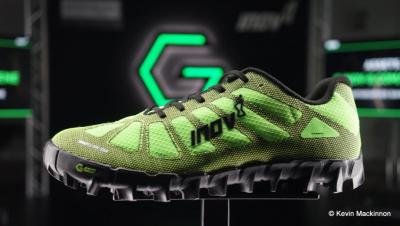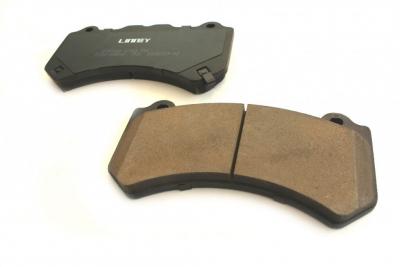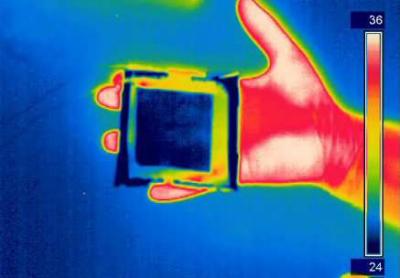The Graphene-Info newsletter, July 2018
Published: Tue, 07/03/18
Inov-8 and manchester University launch graphene-enhanced shoes
British sportswear brand Inov-8 has teamed up with Manchester University to “become the world's first company to incorporate graphene into running and fitness shoes”. They announced a new shoe that features graphene, hoped to be "a game changer in the industry".
The Ultimate goal will be to reduce the weight of running shoes by 50%, according to Michael Price, Inov-8’s product and marketing director. The company announced The G-Series range which includes three different shoes – two trail-oriented shoes and one geared for cross-training. The Company estimates that the TerraUltra G 260 will likely be the most popular in Canada – it’s geared for more strenuous trail efforts. The Mudclaw G 260 is geared for extra muddy terrain and obstacle courses. Finally the F-Lite G 290 has been developed for cross-fit athletes to wear in the gym. Each shoe includes graphene-enhanced rubber outsoles and breathable mesh uppers that are enforced with Kevlar.
Researchers develop a graphene-based approach to making light interact with matter
Researchers at MIT and Israel's Technion have used graphene to devise a new way of enhancing the interactions between light and matter, in a work that could someday lead to more efficient solar cells that collect a wider range of light wavelengths, and new kinds of lasers and light-emitting diodes (LEDs) that could have fully tunable color emissions.
The basic principle behind the new approach is a way to get the momentum of light particles (photons) to more closely match that of electrons, which is normally much greater. This huge difference in momentum normally causes these particles to interact very weakly; bringing their momenta closer together enables much greater control over their interactions, which could enable new kinds of basic research on these processes as well as a host of new applications, the researchers say.
Although the work is still at an early and theoretical stage, the researchers say that in principle this approach could lead to new kinds of solar cells capable of absorbing a wider range of light wavelengths, which would make the devices more efficient at converting sunlight to electricity. It could also lead to light-producing devices, such as lasers and LEDs, that could be tuned electronically to produce a wide range of colors.
Linney Tuning develops graphene-enhanced brake pads
Linney Tuning, a UK-based company that specializes in the research and development of innovative performance tuning components and custom calibration solutions, is using bi-layer graphene in the development of brake pads - currently in the development/testing stage. In addition, Linney states that it should have graphene clutch plates in testing by the end of June 2018.
The addition of graphene as automotive friction material ingredient is said to produce a higher wear resistance than the conventional car brake friction material and a high friction coefficient, to increase the long-term durability, which makes it possible to improve the noise problem during braking.
Talga Resources reports breakthrough on its graphene-infused concrete project
Australia-based advanced materials company Talga Resources has reported high levels of electrical conductivity in concrete by using an additive developed from the Company’s graphene-graphite research and development laboratory in the UK.
The reported breakthrough offers substantial potential in existing and emerging industrial applications. Talga shared information gathered from tests that show that the graphene-enhanced concrete is highly electrically conductive - attaining 0.05 ohm.cm volume resistivity. Talga also says that the concrete adds potential ‘heating element’ function and that current applications include: underfloor heating (replacing plumbed hot water based installations), anti-static flooring, EMI shielding, strain sensors and grounding/lightning protection. There is also potential for the emerging application of solid-state heated roads for environmentally friendly way of clearing ice and snow from key transport routes and airports when compared to use of ploughs, corrosive salt, de-icing chemicals and wastewater treatment of runoff. Future potential includes role in dynamic and wireless charging of electric vehicles while driving.
Graphene enables novel thermal camouflage system
Researchers from Bilkent University and Izmir Institute of Technology in Turkey, MIT and University of Manchester have developed a system that can reconfigure its thermal appearance to blend in with varying temperatures in a matter of seconds. The team showed that they could thermally camouflage a person's hand. They also could make the device thermally indistinguishable from its surroundings, in both warmer and cooler environments. The system could lead to new technologies for thermal camouflage and adaptive heat shields for satellites, the researchers say.
The researchers' new camouflage system contains a top electrode with layers of graphene and a bottom electrode made of a gold coating on heat-resistant nylon. Sandwiched between the electrodes is a membrane soaked with an ionic liquid, which contains positively and negatively charged ions. When a small voltage is applied, the ions travel into the graphene, reducing the emission of infrared radiation from the surface. The system is thin, light and easy to bend around objects.
First Graphene and Flinders University form a new company to commercialize VFD technology
First Graphene is collaborating with Flinders University to launch 2D Fluidics - a company that will aim to commercialize the Vortex Fluidic Device (VFD). 2D Fluidics is 50% owned by FGR and 50% by Flinders University’s newly named Flinders Institute for NanoScale Science and Technology.
The VFD was invented by the Flinders Institute for NanoScale Science and Technology’s Professor Colin Raston and enables the production of materials without the need to use harsh or toxic chemicals in the manufacturing process (which is required for conventional graphene and shortened carbon nanotube production). This clean processing will also greatly reduce the cost and improve the efficiency of manufacturing these new high quality carbon materials.
2D Fluidics will use the VFD to prepare these materials for commercial sales, which will be used in the plastics industry for applications requiring new composite materials, and by the electronics industry for circuits, supercapacitors and batteries, and for research laboratories around the world.
Researchers use graphene to increase the sensitivity of diagnostic devices
Researchers at the University of Pennsylvania have used graphene to increase the sensitivity of diagnostic devices, in particular those used to monitor and treat HIV. The team combined a trick of DNA engineering which involves an engineered piece of DNA called a hairpin, with biosensors, increasing the sensitivity of the sensors by a factor of 50,000 in less than an hour.
The biosensors are made with graphene, and so can be used as an extremely sensitive way of detecting biological signals, measuring the current that flows through graphene surface in the presence of biomolecules. When DNA or RNA molecules bind to the graphene, it produces a big change in the conductivity of the atomically thin material, allowing the researchers to detect infections and to measure viral loads.
Are you looking to raise funds for your graphene business? Graphene-Info may have the perfect solution with its soon-to-be-launched platform for graphene equity crowdfunding.
Global Graphene Group (G3), the holding company of Angstron Materials and Nanotek Instruments, announced G3-Fireshield Technology – a suite of next-gen battery components to reduce the risk of fire in EVs, portable electronics, and more.
A collaboration between Graphmatech and Add North 3D yielded conductive Aros Graphene-based filaments for 3D printing that may open up new 3D-printing applications such as thermal management components, circuit boards and efficient electromagnetic and radio frequency shielding.
Engineers from the UCLA used graphene to design a new type of photodetector that can work with more types of light than its current state-of-the-art counterparts. The device also has superior sensing and imaging capabilities.
Haydale announced that strong commercial progress has been made with an unspecified global composite materials group to enhance mechanical properties for selected products in their range of materials, through a commercially funded contract.
Researchers at the Institute of Energy and Climate Research (IEK-1) in Germany developed a material comprising tin oxide nanoparticles enriched with antimony, on a base layer of graphene, that can triple the capacity of a battery cell and dramatically cut the charging time.
China-based display maker BOE Group announced that it is looking into adopting graphene for next-generation touch screens.
A collaborative study reports the phenomenon of ion trapping by "graphene carpets" and its effect on the communication between neurons.
Versarien, through its subsidiary Cambridge Graphene, signed a wide-ranging agreement with Arrow Greentech (a leading global manufacturer of cast water-soluble film) and also launched a new brand to market its graphene inks under the name Graphinks.
Do you have a friend or a colleague that might be interested in Graphene technology? Forward this mail to update him on the world of Graphene.
If you received this email from a friend, subscribe to this newsletter here!









